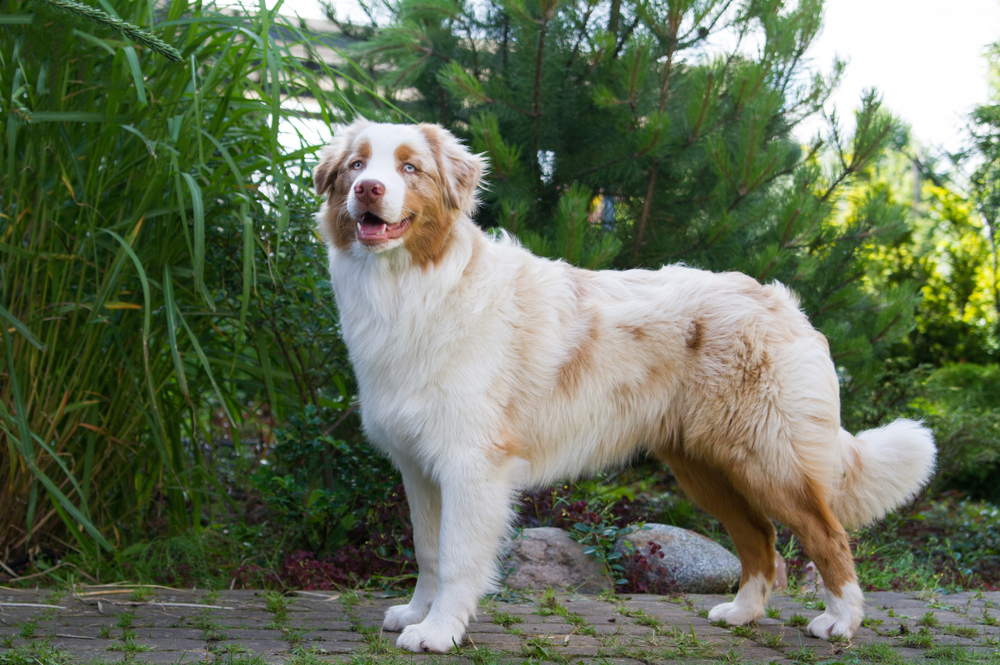Original Article: https://www.dogster.com/lifestyle/how-old-is-14-in-dog-years
Click to Skip Ahead
It has long been a misconception that 1 human year is equivalent to 7 dog years. However, the rate of aging varies according to the size of the dog, as well as the stage of the dog’s life.
14 in dog years would be equivalent to 72 for small dogs under 20 pounds, 78 for medium dogs between 21 and 50 pounds, 88 for a large dog between 51 and 90 pounds, and 108 for giant breeds over 90 pounds.


How Many Years Has the 14-Year Old Dog in Human Years by Size
| Size | Age in human years |
| Small breed (<20 lbs or less): | 72 years |
| Medium breed (21 to 50 lbs): | 78 years |
| Large breed (51 to 90 lbs): | 88 years |
| Giant breed (>90 lbs): | 108 years |
How To Calculate Dog Years to Human Years
There isn’t really a single calculation to work out a dog’s age. Dogs of different sizes mature differently and have wildly different average lifespans. However, it has been claimed in the past that one human year was equivalent to 7 dog years, but this is inaccurate. Consider that some giant dog breeds only live to around 8 years, and this means they have a life expectancy equivalent to 56.
Research has debunked this 7-year myth, pointing to the very fact that dogs of different sizes mature and age differently. It’s also worth noting that human lifespans have changed over the years, which means that the calculations of human years would have changed at the same time.

What’s the Science Behind Dog vs. Human Years?
Dogs mature at different rates to humans. Although it differs according to dog size, age, and a variety of other factors that we will take a look at later in the article. To calculate the equivalent age, the upper end of the human average lifespan is taken and compared to the lifespan of the different sizes of dogs to give a general figure.
However, dogs also mature at different rates to people. A lot of breeds are considered to be close to being adults at a year of age, but using the 7-year model would only put them at 7 years old. As such, the American Veterinary Medical Association (AVMA) estimates that the first year of a dog’s life is equivalent to around 15 human years.1
Even this logic is somewhat flawed because while some dogs finish maturing at 12 months, others don’t fully mature until they are 2 years old, and this includes some giant breeds that have comparatively short lifespans.


The Life Stages of a Dog
- Puppy – The puppy stage lasts from birth to around 6 to 9 months of age (although this can be later depending on breed and size) and is the time when a young dog goes through the most developmental and physical growth. This is also an important time for socialization, training, and in other areas of canine development.
- Young Adult – From around 9 months to approximately 3 years of age, a dog is said to be a young adult. They will still have a playful and inquisitive attitude and will still be receptive to training and socialization efforts, but they will grow much more slowly, with some dogs stopping physical growth at the age of about 12 months.
- Mature Adult – From 3 years to between 7 and 10 years old, dogs are considered mature adults. They will not usually be as boisterous as they were as puppies and young adults, although some will still be prone to fits of puppylike behavior. Mature adult dogs should not grow in size anymore and while training and socialization take longer at this age, they are still beneficial.
- Senior – A senior dog is one that has entered the last quarter or so of its expected life. Giant breeds might be considered senior at the age of 6 or 7 while some small breeds only reach this stage at around the age of 10.

Life Span by Breed Size
| Size | Average life span |
| Small breed (<20 lbs or less): | 10 – 15 years |
| Medium breed (21 to 50 lbs): | 10 – 13 years |
| Large breed (51 to 90 lbs): | 10 – 12 years |
| Giant breed (>90 lbs): | 8 – 10 years |


Key Factors That Affect the Dog’s Aging Process
As well as the size of a dog’s breed, other factors affect the aging process of individual dogs with some of the most common factors being:
- Genetics – Some dog breeds are also prone to certain health conditions that can affect their lifespan such as heart disease and hip dysplasia.
- Diet and Dietary Schedule – Dogs need high-quality balanced diets to live long and healthy lives. These diets can take different forms, from commercial dry dog foods to raw and fresh diets. Proper nutrition will provide all the essential nutrients dogs need and help them to maintain a healthy weight. Older dogs in good body condition are less likely to develop certain obesity-related conditions which can accelerate aging, such as arthritis and diabetes. The frequency a dog is fed is also believed to have an effect, with at least one study actually suggesting that a single meal a day can help prevent certain cognitive and physical conditions. Twice-daily feeding is generally considered the norm, however.
- Veterinary Care – Regular vet check ups and preventative care such as vaccinations, parasite control, and dental hygiene, help prevent or pick up some age-related healthcare issues early. It is generally accepted that spaying and neutering dogs can help prolong their lives, although some studies suggest that is not always the case. Spaying and neutering certainly help prevent certain types of cancer and other conditions but may increase the likelihood of other conditions. It’s recommended to discuss spaying and neutering with your vet for advice tailored to your dog’s age and breed.
- Environment and Exercise– A dog living in a safe, healthy environment is less likely to develop certain illnesses and show fewer negative signs of aging, although this isn’t necessarily always true. Regular physical activity and mental stimulation are also essential for good health by helping maintain muscle mass, cardiovascular fitness and prevent cognitive decline as dogs age.



Conclusion
It has long been the misconception that one dog year is equivalent to seven human years. But studies have debunked this myth pointing to the fact that breeds of different sizes tend to have very different average lifespans.
As such, there is no single formula to determine a dog’s equivalent age, although some say that the first year of a dog’s life is equivalent to 15 in human years, the second year is 9 years, and every year after is another four or five years, but this still doesn’t account for the differences in dog sizes.
Featured Image Credit: Bildagentur Zoonar GmbH, Shutterstock
Source: Dogster












